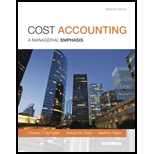
Key Success Factor:
To meet the demand of delivering ever-improving levels of performance, the companies are required to use the value chain and supply chain in most effective ways. The important key success factors are as follows:
1. Cost and efficiency: There is tremendous pressure on managers to reduce the cost of the products or services. In order to calculate and reduce the cost, the managers must understand all the costs that incurred from setting up machines to finally delivery to its customers. Apart this, the managers need to closely watch the marketplace to determine the amounts that a customer is willing to pay. They need to eliminate certain cost in order to reach target price.
2. Quality: Customer demands ever-improving quality of products and services. This is also an integral philosophy of total quality management (TQM). Using TQM, companies can produce products or services with zero defects and waste, and minimizes the inventory levels.
3. Time: It has two dimensions, new-product development time and customer-response time. The increasing pace of technological innovation has led to shorter product life cycles and more rapid introduction of new products. Customer-response time is the speed at which an organization responds to customer request. The organizations are required to meet their promised dates as well as reduce their delivery times.
4. Innovation: The organizations are innovating products, services, strategies, business models, promotion, and distribution efforts in order to beat the ongoing competition. Managers have to depend upon their R&D department for evaluating alternatives and providing innovating business models,
5. Sustainability: The organizations are implementing the above four key success factors to promote sustainability in the development and implementation of strategies, which eventually promotes long-term financial, social, and environmental goals.
The linkage of given changes to the key success factors.
Want to see the full answer?
Check out a sample textbook solution
Chapter 1 Solutions
Cost Accounting (15th Edition)
- Given the solution and accounting questionarrow_forwardDAWAT Company's highest point of the total cost was $83,000 in June. Their point lowest cost was $69,000 in January. The company makes a single product. Production volumes in June and January were 18,000 and 9,000 units, respectively. What is the fixed cost per month?arrow_forwardI am searching for the correct answer to this general accounting problem with proper accounting rules.arrow_forward

 AccountingAccountingISBN:9781337272094Author:WARREN, Carl S., Reeve, James M., Duchac, Jonathan E.Publisher:Cengage Learning,
AccountingAccountingISBN:9781337272094Author:WARREN, Carl S., Reeve, James M., Duchac, Jonathan E.Publisher:Cengage Learning, Accounting Information SystemsAccountingISBN:9781337619202Author:Hall, James A.Publisher:Cengage Learning,
Accounting Information SystemsAccountingISBN:9781337619202Author:Hall, James A.Publisher:Cengage Learning, Horngren's Cost Accounting: A Managerial Emphasis...AccountingISBN:9780134475585Author:Srikant M. Datar, Madhav V. RajanPublisher:PEARSON
Horngren's Cost Accounting: A Managerial Emphasis...AccountingISBN:9780134475585Author:Srikant M. Datar, Madhav V. RajanPublisher:PEARSON Intermediate AccountingAccountingISBN:9781259722660Author:J. David Spiceland, Mark W. Nelson, Wayne M ThomasPublisher:McGraw-Hill Education
Intermediate AccountingAccountingISBN:9781259722660Author:J. David Spiceland, Mark W. Nelson, Wayne M ThomasPublisher:McGraw-Hill Education Financial and Managerial AccountingAccountingISBN:9781259726705Author:John J Wild, Ken W. Shaw, Barbara Chiappetta Fundamental Accounting PrinciplesPublisher:McGraw-Hill Education
Financial and Managerial AccountingAccountingISBN:9781259726705Author:John J Wild, Ken W. Shaw, Barbara Chiappetta Fundamental Accounting PrinciplesPublisher:McGraw-Hill Education





